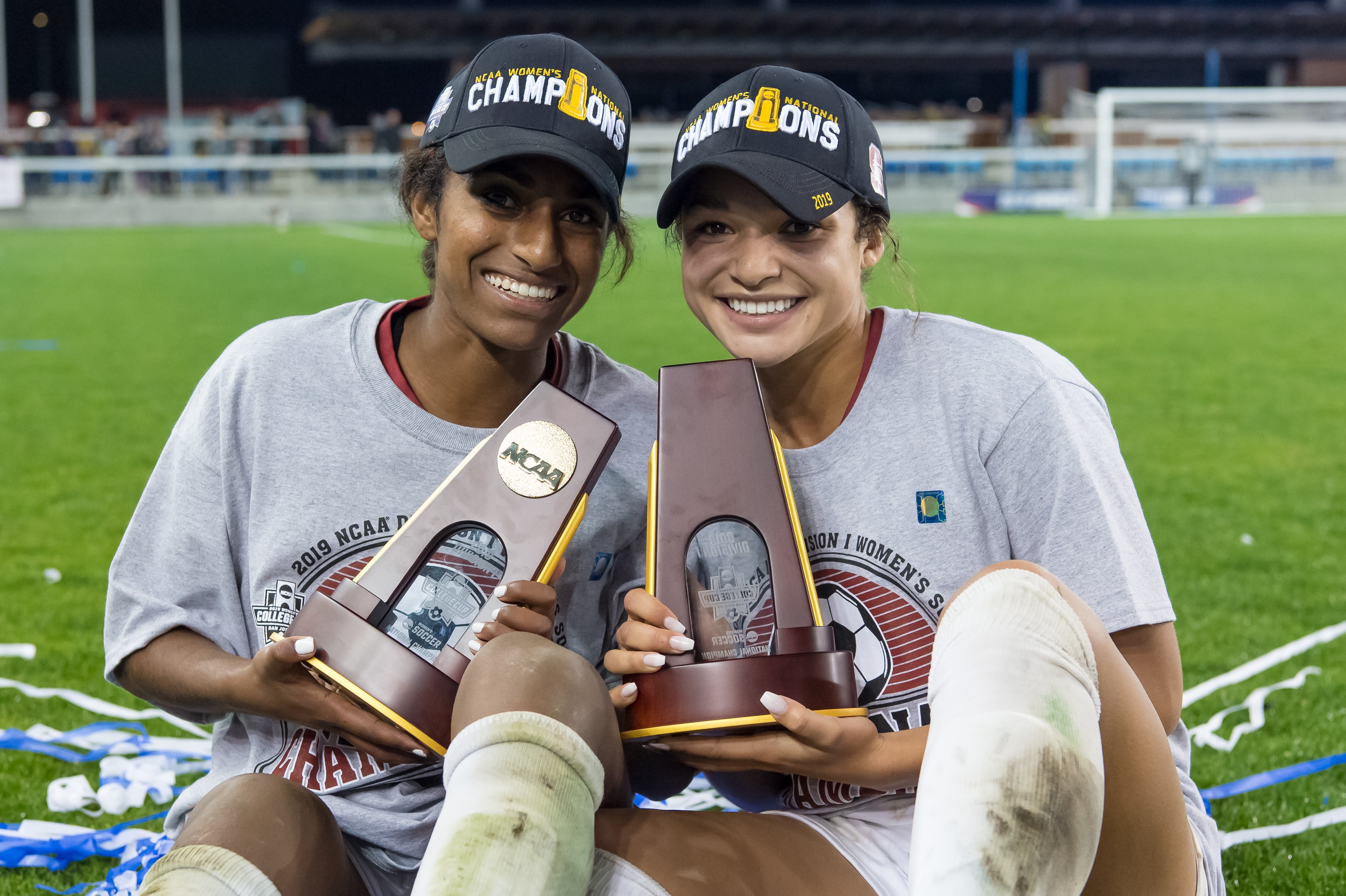On Nov. 27, 20-year-old forward Sophia Smith made her U.S. Women’s National Soccer Team debut, entering the U.S. match against the Netherlands in the 75th minute and making history as the first player born in the 2000s to appear for the USWNT.
But Smith is not the only Stanford alum to currently play for the USWNT; she joins goalkeeper Jane Campbell ’17, defender Tierna Davidson ’18 (who left early to declare for the 2019 draft), defender Kelley O’Hara ’10 and forward Christen Press ’11 — all of whom are already established players for the U.S. This is not to mention current Stanford senior midfielder Catarina Macario, who is on the USWNT roster but has yet to make her debut, and midfielder Andi Sullivan ’17, who is out due to an injury but remains a strong candidate for the 2021 Tokyo Olympics.
For decades, the Cardinal have been a major powerhouse in women’s soccer. From dominating the Pac-12 Conference to being reigning NCAA champions, the team seems to be unstoppable. Thus, Stanford is a major source from which the USWNT pulls players. Since the Cardinal varsity team was founded in 1984, 17 players have gone on to play for the national team. The question for me, then, was why. Why is Stanford women’s soccer so successful?
Things did not start smoothly for Stanford on the soccer field. In the Cardinal’s first season in 1984, the team finished 7-7-0 under head coach Helen Keohane, who continued to coach through 1986. During Keohane’s tenure, Stanford women’s soccer was suboptimal with a record of 5-12-1 in 1985 and 3-12-1 in 1986.
In 1987, Eritrean American soccer legend Berhane Andeberhan became head coach, but the team still struggled. Carrying forward ineffective tactics from previous seasons and facing the difficulties of a new coach, the Cardinal ended with a disappointing record of 4-10-4. Nevertheless, in a 2012 interview with Eritrea Sports News, Andeberhan stated that, despite that unfortunate first season, he was determined to “build a varsity program from the ground up.”
So 1988 became a pivotal year for the Cardinal. For the first time, Stanford women’s soccer had a winning record of 13-4-2 — a drastic improvement from previous seasons. Andeberhan continued to produce wins throughout his years with an amassed record of 77-26-11 by 1992.
According to Stanford Athletic Director Ted Leland (1991-2005), “[Andeberhan] helped make Stanford one of the top women’s soccer programs in the nation.”
So does Andeberhan deserve all the credit for transforming Stanford women’s soccer? No, of course not. Stanford’s strong academics aided Andeberhan in recruiting incredible players — an asset which he recognized himself.
“Using a few special players as a backbone of the team, we were able to build an excellent program,” Andeberhan said.
Golazos galore 🎯🔥
— U.S. Soccer WNT (@USWNT) December 16, 2020
Making the Case: @ChristenPress for 🇺🇸 Player of the Year ≫ https://t.co/s3xiTpd3Ol pic.twitter.com/abL3zMRMXk
Sweeper Heather McIntyre ’92 and midfielder Julie Foudy ’93 were both major factors in the transformation of the Cardinal, too.
The turnaround for Stanford women’s soccer was sudden. In 1988 the Cardinal was winning just over 20% of their games, yet in 1989 Stanford won nearly 70% of its games. This bodes a new question: Is a soccer program that fragile? If the Cardinal improved so much so quickly, could they fall that easily as well? Any year now, could the Cardinal take a turn for the worst?
If you had asked me in 1992 (assuming I was alive then), I would have answered yes. However, what happened next would have proved me wrong.
On June 9, 1993 Andeberhan resigned due to allegations of verbal abuse. Entering that 1993 season, the Cardinal needed to protect their reputation and prove that they more than just Andeberhan — they were a program. The Cardinal prevailed and sended with a record of 18-2-2 and a conference title under the new coach, Ian Sawyers.
Despite the ups and downs and coaching changes, Stanford’s women’s soccer has not had a losing season since 1988.
Paul Ratcliffe, who has served as head coach since 2003, credits their high “standard of excellence” as a factor that pushes players. He notes that the Cardinal have “the right environment and the right culture.”
So how do we answer the question of why Stanford’s women’s soccer team is so good? The coveted explanation is unsurprisingly complex and multifaceted. It’s some special concoction of the undeniable drive of players, successful coaching, the indisputable recruiting pull of Stanford academics and the positive environment within the team.
Will Stanford still be the main feeder into the national team 15, 20 or even 30 years from now? It’s hard to say. I don’t want to predict that the team will never falter — but, with six consecutive Pac-12 conference titles (15 total) and four NCAA championships, it seems as though the Cardinal is here to stay.
Contact Samantha Leventis at samantha040602 ‘at’ gmail.com.
